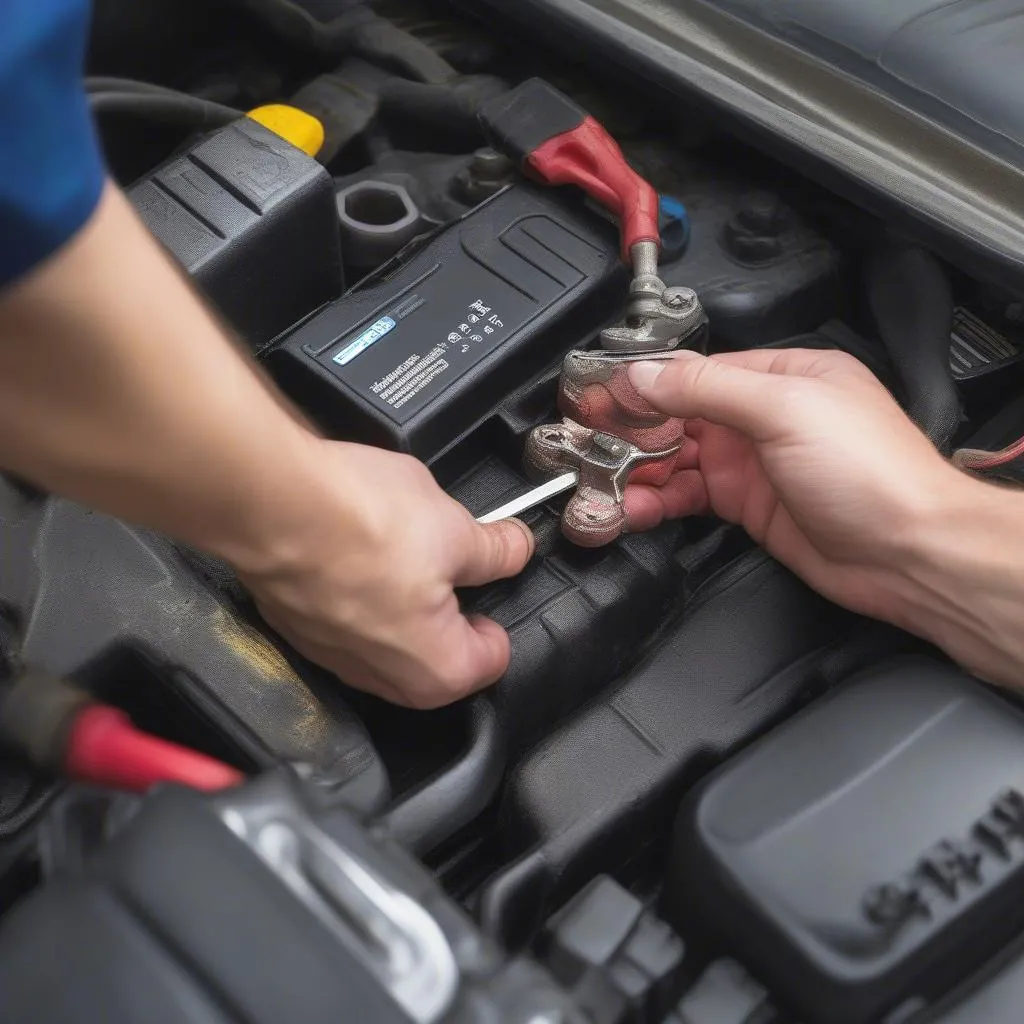The brake warning light on your Freelander 1 is a crucial safety feature, illuminating when the vehicle’s computer detects an issue within the braking system. While it can be alarming to see it glowing on your dashboard, understanding the common causes and their solutions can help you address the problem efficiently.
Common Causes of the Freelander 1 Brake Warning Light
There are several reasons why your Freelander 1’s brake warning light might turn on, ranging from simple fixes to more complex issues:
1. Low Brake Fluid Level
One of the most common and straightforward causes is low brake fluid. Your Freelander 1, like any vehicle, relies on brake fluid to transmit force from the brake pedal to the wheels, enabling effective braking. If the fluid level drops below a certain point, the warning light is triggered.
Solution: Check your brake fluid reservoir. It’s usually a translucent container located near the firewall on the driver’s side. If the fluid level is low, carefully top it up with the recommended brake fluid type specified in your owner’s manual. However, simply adding fluid won’t solve the problem if there’s a leak, which needs immediate attention.
2. Worn Brake Pads
Brake pads are designed to wear down over time. They create friction against the brake rotors to slow down or stop your vehicle. As the friction material depletes, the brake warning light might activate.
Solution: Inspect your brake pads for wear. If they are thin or nearing their wear indicators, it’s time for a replacement. Brake pad replacement is a standard maintenance procedure and should be performed by a qualified mechanic, especially if you’re not comfortable working on brakes.
3. Faulty Brake Pad Sensor
Some Freelander 1 models come equipped with brake pad wear sensors. These sensors are small wires embedded within the brake pad material. When the pads wear down to a certain level, the sensor wire makes contact with the brake rotor, completing a circuit and illuminating the brake warning light.
Solution: If your brake pads look fine but the warning light persists, a faulty brake pad sensor could be the culprit. A mechanic can test the sensor and replace it if necessary. It’s worth noting that driving with a faulty sensor for an extended period can lead to further brake system damage.
4. ABS System Malfunction
The Anti-lock Braking System (ABS) is a crucial safety feature that prevents wheel lockup during hard braking. Your Freelander 1’s brake warning light is also connected to the ABS system. If the ABS module detects a fault, it might trigger the warning light.
Solution: Diagnosing ABS issues requires specialized equipment. If you suspect an ABS malfunction, it’s best to take your Freelander 1 to a qualified mechanic or dealership for proper diagnosis and repair. Ignoring ABS problems can compromise your safety on the road.
5. Issues with the Brake Master Cylinder
The brake master cylinder plays a vital role in converting the force applied to the brake pedal into hydraulic pressure. If the master cylinder fails or develops a leak, it can lead to a loss of braking pressure and trigger the warning light.
Solution: Master cylinder problems are serious and can lead to complete brake failure. If you suspect an issue with the master cylinder, seek immediate attention from a qualified mechanic or dealership.
Freelander 2 Brake Pad Warning Light
Experiencing similar issues with your Freelander 2? Learn more about the common causes and solutions for a Freelander 2 brake pad warning light to ensure your vehicle remains safe on the road.
Conclusion
A glowing brake warning light in your Freelander 1 should never be ignored. It signals a potential issue with a system crucial to your safety and the safety of others. While some causes, like low brake fluid or worn brake pads, are relatively simple to address, others require professional diagnosis and repair. Regular vehicle maintenance, including brake inspections, can help prevent many of these issues and keep your Freelander 1 stopping safely.

